Discover 11 hidden attractions, cool sights, and unusual things to do in Guilin (China). Don't miss out on these must-see attractions: Seven-star Cave, Reed Flute Cave, and Elephant Trunk Hill. Also, be sure to include Guangxi Normal University in your itinerary.
Below, you can find the list of the most amazing places you should visit in Guilin (Guangxi).
Table of Contents
Seven-star Cave

Seven-star Cave is an extensive limestone cave complex in Seven-star Park, both of which are popular tourist attractions in the city of Guilin in Guangxi Autonomous Region in China. The name derives from the fact the main karst limestone peaks form roughly the same pattern as the stars of the Big Dipper constellation. The earliest exploration of Seven-star Cave dates back to the Tang dynasty, about 1,300 years ago. The name can also be rendered Seven Stars Cave, Cave of Seven Stars, etc.
The cave has a year-round temperature of about 20 Celsius. The maximum ceiling height inside is 27 metres, and the maximum width is 49 metres. A concrete and stone tour path of approximately 1,000 metres runs through the cave between its entrance and exit points. Artificial lighting for walkways and displays is staged throughout, including colored accents, and various formations have been given names such as "A Natural Fresco" and "The Chessboard". During the Japanese invasion of China in World War II, Guilin residents took refuge in the cave complex.
The cave has scheduled tours about once per hour, conducted in Mandarin Chinese, usually with a megaphone irrespective of group size, explaining in detail the origins of various formation names, such as a dragon eating a bear, or a bear catching a tiger. The tour cannot easily be walked independently of groups, since the lights inside the cave are turned off behind the groups as they walk away. Signs are posted in both Chinese and English and takes typically 30–60 minutes.
Like most parks in Guilin, the cave complex maintains an entrance fee, costing 30 RMB beyond the basic park entrance fee of 75 RMB.[1]
Address: 1 七星路, Guilin
Reed Flute Cave
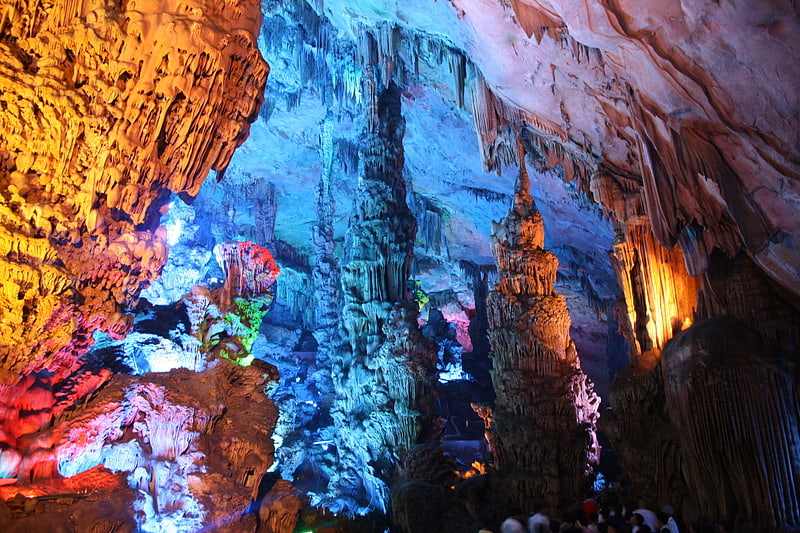
Also known as: 芦笛岩
Tourist attraction in Guilin, China. The Reed Flute Cave, also known as "the Palace of Natural Arts," is a landmark and tourist attraction in Guilin, Guangxi, China.
The cave got its name from the type of reed growing outside, which can be made into flutes. Reed Flute Cave is filled with a large number of stalactites, stalagmites and other rock formations. Inside, there are more than 70 inscriptions written in ink, which can be dated back as far as 792 AD in the Tang Dynasty. These aged inscriptions tell us that it has been an attraction in Guilin since ancient times. It was rediscovered in the 1940s by a group of refugees fleeing the Japanese troops. Nowadays, multicolored lighting artificially illuminates the cave.[2]
Address: Ludi Rd (芦笛路; Lúdílù), Guilin
Elephant Trunk Hill
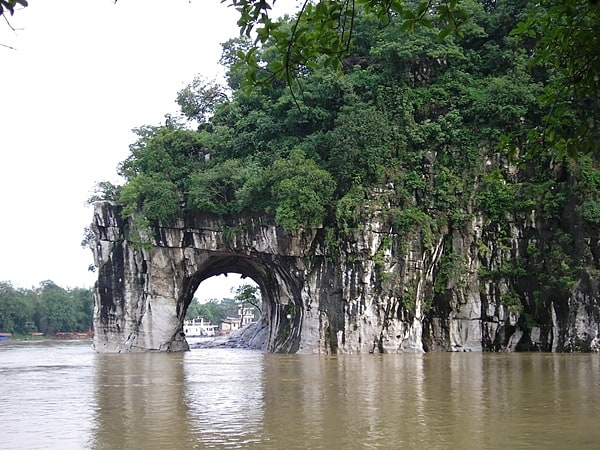
Also known as: 象鼻山
Tourist attraction in Guilin, China. This article is for the landmark in Guilin, China. For the similarly named hill and provincial park in British Columbia, Canada, see Elephant Hill Provincial Park.
The Elephant Trunk Hill (Chinese: 象鼻山; pinyin: Xiàngbí Shān) is a hill, landmark and tourist attraction in Guilin, Guangxi, China. It is not only one of the major tourist attractions of Guilin, an international tourist city, but also the symbol of Guilin, which uses elephant trunk mountain and osmanthus flower as its city emblem. The Elephant Trunk Hill formerly known as Li Mountain, also known as Yi mountain, Chen Shui mountain, referred to as elephant mountain. In 1986, Xiang Shan park was built in accordance with Xiang Shan mountain. The main part of the park is Xiang Shan mountain and water moon, the ancient building Yun Feng temple, the love island, and the Ming dynasty building Pu Xian pagoda. Elephant Trunk Hill is the symbol of the city of Guilin. It got its name because it looks like an elephant drinking water. The round opening that would be under the elephant’s trunk is known as Water-Moon Cave because at night the reflection of the moon can be seen through the arch and it looks as if it is under the water and floating on the surface of the water at the same time. Elephant Trunk Hill and Water-Moon Cave are located at the confluence of the Taohua River and the Lijiang River.
The related legends: According to legend, the elephant trunk mountain was transformed from the god image in the sky. It turned out that this elephant was the god who carried the vase for the emperor of heaven. One year, the emperor of heaven went out on a hunting expedition. With a mighty procession, a hundred elephants, hundreds of heavenly horses and dozens of divine chariots passed by guilin, a city with beautiful mountains and rivers. Tian di's large group of troops trampled on a large area of fields, flowers and plants crops were ravaged, pigs, horses, cattle and sheep were slaughtered, the beautiful guilin bare land thousands of miles, a tragic scene. An elephant fell ill by the side of the road due to exhaustion. When the emperor of heaven saw it dying, he left it and took the other soldiers and horses with him. When the elephant was dying, an old man named xiang gong and xiang Po rescued it. Under the care of mother and father, the elephant recovered quickly. In return for the old man's saving his life, the elephant went to the fields to cultivate land for the public and the farmers, and vowed never to return to heaven. Farmers came to thank the elephants for their help. The emperor of heaven ordered the slaves to go back to guilin to look for the sick god because an elephant was missing from the procession. When the elephant slave came to guilin, he saw the elephant tilling the fields for the peasants and scolded it for losing the identity and face of the god of heaven. The elephant said, "can you, I and the emperor of heaven only eat what the peasants grow and not do anything for them? I will never go back to be a slave to the emperor of heaven." When the emperor of heaven heard that the god elephant refused to go to heaven, he took the heavenly soldier to catch the elephant. The elephant raised his trunk and defended himself bravely. He fought for three days and nights with the soldiers of heaven. When the emperor of heaven saw that the elephant was so brave that he would lose too many soldiers and generals, he thought of a cruel plan. He said to the elephant, "you are a fierce warrior. I like you very much. Say that finish, take day soldier day will withdraw day go up. The elephant listened to the emperor of heaven and was completely off guard. So he went to the lijiang river and drank water to quench his thirst. Just as it hung down its long nose to drink water, the emperor of heaven quietly walked up behind it and plunged his long sword into the elephant's body. The elephant was dead, but it did not fall. As time went by, the god turned into a magnificent elephant trunk mountain. From afar, the elephant trunk, elephant body, elephant tail everywhere clear. The small bottle-shaped tower on the mountain is said to be the hilt left by the emperor of heaven. In fact, this ancient pagoda was built in the Ming dynasty, engraved with the bodhisattva puxian, called "puxian pagoda", also known as "bottle pagoda".[3]
Address: Binjiang Rd (滨江路; Bīnjiānglù), Guilin
Guangxi Normal University

Also known as: 广西师范大学
University in Guilin, China. Guangxi Normal University is a provincial research university located in Guilin, Guangxi, China with historical strengths in teacher education, basic arts and sciences, and international exchange programs. Established in 1932 as one of the earliest normal schools in China, GXNU has evolved into a comprehensive university granting undergraduate, graduate, and doctoral degrees across 21 colleges and departments with 75 undergraduate majors.
The GXNU chemistry department is ranked in the Global Top 1% according to the Thompson Reuters 2017 InCites Essential Science Indicators (ESI), based on citation frequency of published research papers.[4]
Sun and Moon Pagodas
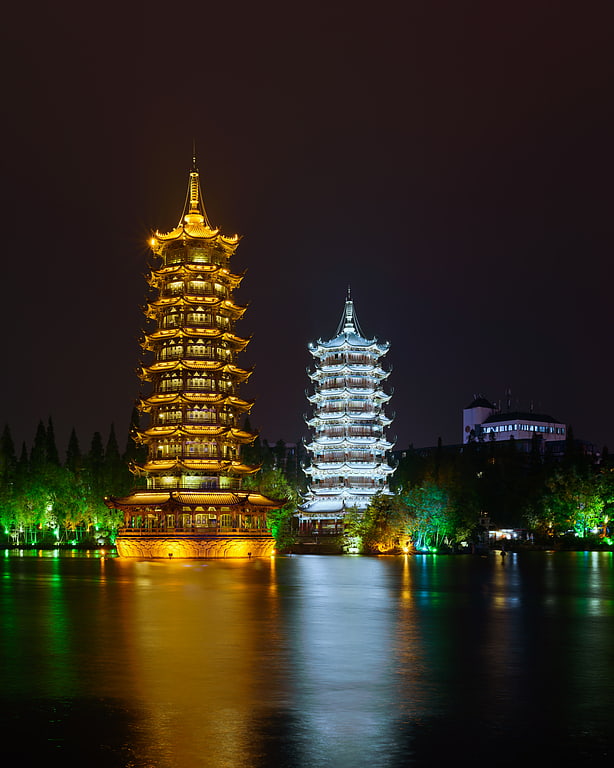
The Sun and Moon Pagodas are twin pagodas located in Guilin, Guangxi, China. Originally built in the city moat of Guilin during the Tang dynasty, the pagodas were reconstructed in 2001 using historical records as the centerpiece of Riyue Shuangta Cultural Park—–a park themed around the unity of Buddhism, Confucianism, and Taoism. The Moon Pagoda was built on an island in Shan Lake while the Sun Pagoda was built out in the lake. The Sun Pagoda has an octagonal base, is faced with bronze, has nine stories, and is 41 m tall. The Sun Pagoda is the tallest bronze pagoda in the world and is one of the few pagodas in the world that has an elevator. The Moon Pagoda has an octagonal base, is faced with glazed tile, has seven stories, and is 35 m tall. They were featured as the ninth Pit Stop during the fourteenth season of The Amazing Race in 2009.[5]
Seven Star Park
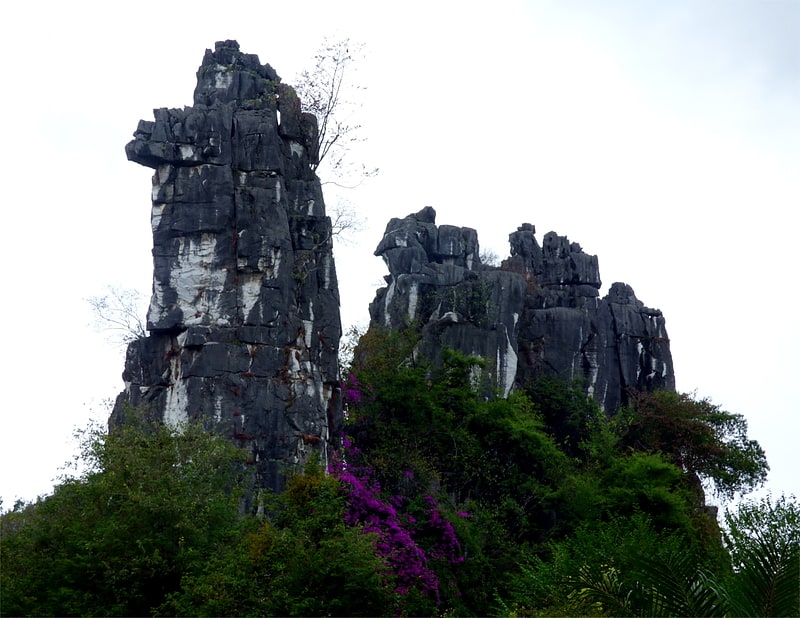
Seven Star Park is located in Qixing district. The park itself encompasses 7 hills, hence its name.[6]
Address: No.1 Qixing Road, Qixing District, 541004 Guilin
Jingjiang Princes' City
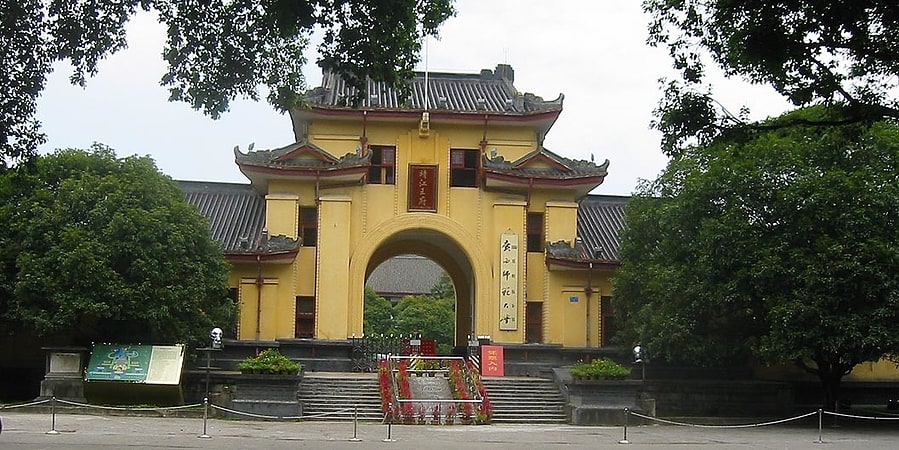
Also known as: 靖江王府
National park in Guilin, China. Jingjiang Princes' Palace is a historical site in Guilin, Guangxi Zhuang Autonomous Region, China. It now functions as both Guangxi Normal University and as a tourist attraction.[7]
Guilin University of Electronic Technology
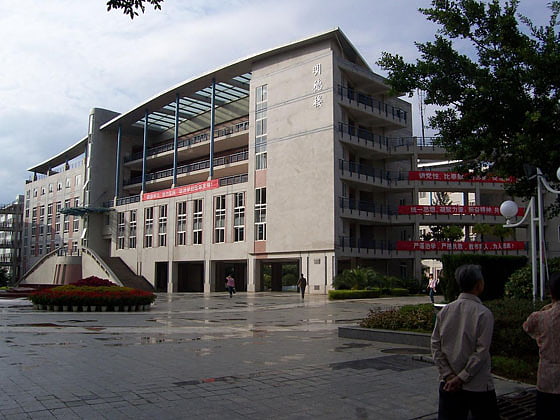
University in Guilin, China. The Guilin University of Electronic Technology is a state university, located in Guilin, Guangxi, China.[8]
Address: 1 金鸡路, Guilin
Jingjiang Princes' City

Also known as: 靖江王府
National park in Guilin, China. Jingjiang Princes' Palace is a historical site in Guilin, Guangxi Zhuang Autonomous Region, China. It now functions as both Guangxi Normal University and as a tourist attraction.[9]
Zengpiyan
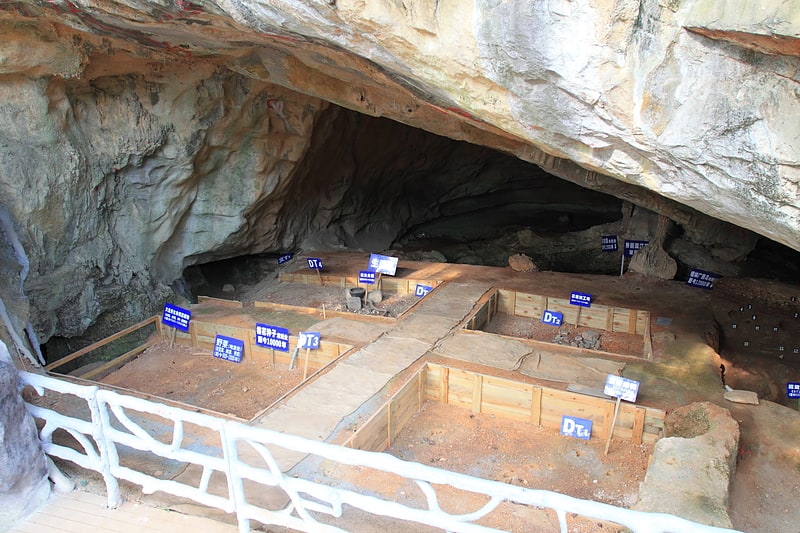
Also known as: 甑皮岩遗址
Tourist attraction in Guilin, China. Zengpiyan is a Neolithic cave site in southern China. It is located in the Guilin region on the south-western fringes of the Dushan Mountain in the autonomous region Guangxi and is considered to be one of the most important cave sites of the Neolithic in China as it is one of the many independent centers for the introduction of animal domestication and pottery.
The cave was discovered in 1969 and archaeological excavations began in 1973. Dating revealed that the cave was occupied between 9,000 and 7,500 years ago, the oldest layer reaching as far back as 12,000 years ago. This natural cave was used as a dwelling place, whether it was only a seasonal habitat is not yet clear. The main cave has an area of approximately 220 m2 (2,368 sq ft) and faces southwest, adjacent to the Li River with neighboring woods for hunting, lakes for fishing and plains for collecting wild vegetables.
Excavations have so far yielded over 30 human corpses, 110 kinds of mammals, birds, fishes and reptiles, over 1,000 pieces of polished and pierced stone and bone ware, animal teeth, mussel shells and over 10,000 pieces of pottery. Many fireplaces and waste pits were also discovered. In the back of the cave stone material is piled up. In older sediments semi-finished stone tools were abundant. Pierced stone tools and polished stone tools were unearthed from more recent layers. Bone artifacts included fishing spears (Yubiao 鱼镖), arrowheads (zú 镞) needles (zhēn 针) and hairpins (jī 笄).
The cave yielded some of the country's oldest pieces of pottery as the appearance of pottery in the area is believed to be related to freshwater snail eating. "Freshwater snails were one of their staple foods, judging by the quantities of snail shells found in various strata". The oldest local pottery is according to Chinese archaeologists dated to 12,000 years BP. The ceramics of more recent strata were determined to belong to the "String pattern-Guan-vessel-type" (绳纹罐类).
For some time the cave must also have served as a primitive tomb as bones of about 30 humans were discovered. No burial pits and funeral tools have been found. The bodies were buried mainly in a squatting position.
The cave was finally abandoned after being inhabited for 5,000 years when a warm and humid period started around 7,000 years ago and the cave, only one meter above the surrounding plain, was often flooded.
The assertion that the pig was domesticated at this site remains controversial and has not yet been answered conclusively.
scholars Zhang Chia and Hsiao-chun Hung in "Later hunter-gatherers in southern China, 18 000–3000 BC":
"The ‘Neolithic package’ doesn't really work for this fascinating chapter of the human experience, where pottery, social aggregation, animal domestication and rice cultivation all arrive at different places and times. The authors define the role of the ‘pottery-using foragers’, sophisticated hunter-gatherers who left shell or fish middens in caves and dunes. These colonising non-farmers shared numerous cultural attributes with rice cultivators on the Yangtze, their parallel contemporaries over more than 5000 years. Some agriculturalists became hunter-foragers in turn when they expanded onto less fertile soils. No simple linear transition then, but the practice of ingenious strategies, adaptations and links in a big varied land."
Zengpiyan has been listed a monument of the People's Republic of China in 2001.[10]
Xiufeng District
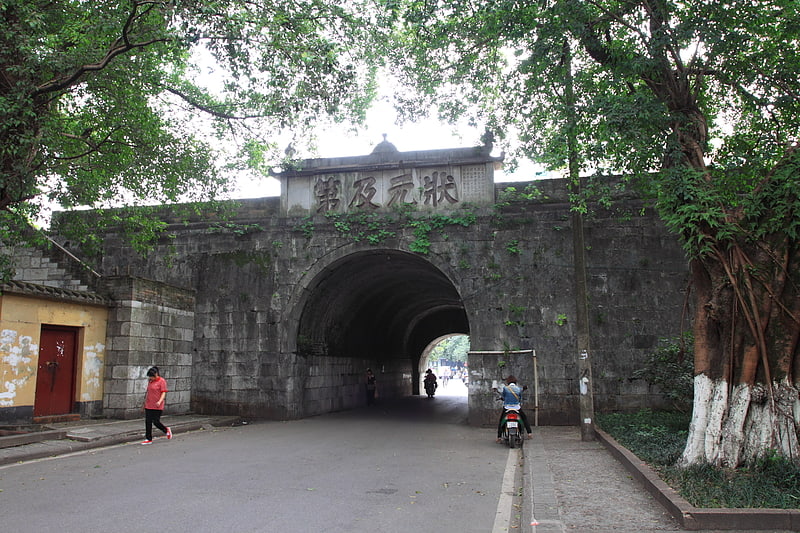
Also known as: 秀峰区
City in China. Xiufeng District is a district of the city of Guilin, Guangxi, China.
Xiufeng District is divided into 3 subdistricts:
- Xiufeng Subdistrict
- Lijun Subdistrict
- Jiashan Subdistrict
Air Guilin has its headquarters in Xiufeng District.[11]